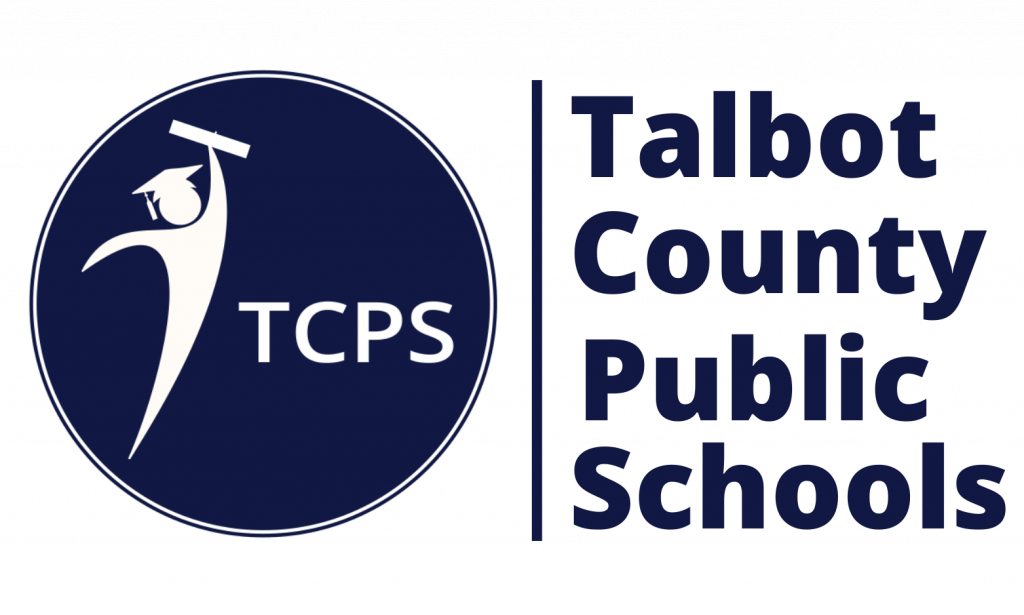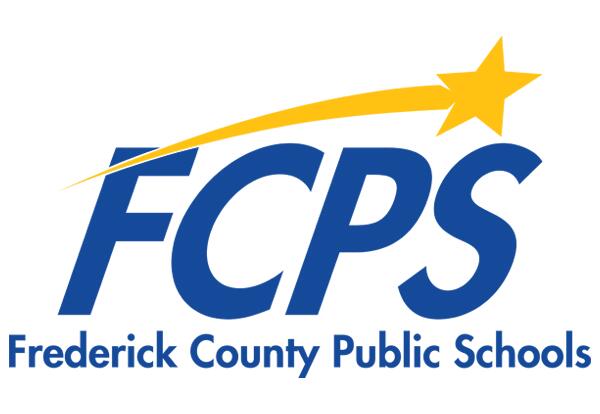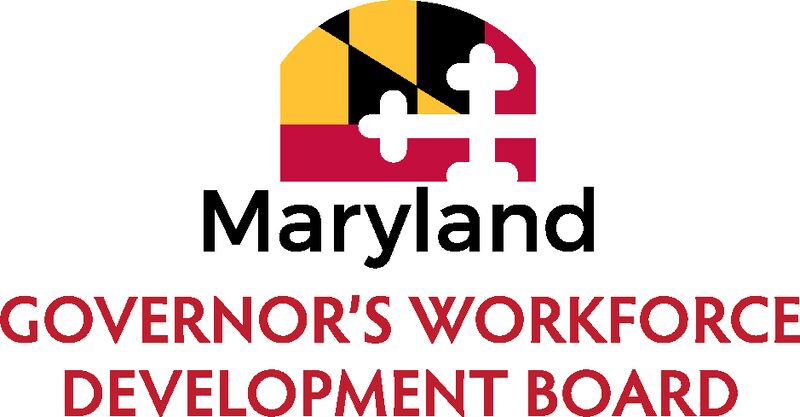IMPACT
Maryland State Profile

Maryland State Department of Education
Baltimore, MD
Baltimore City Public Schools
Baltimore, MD
Frederick County Public Schools
Frederick, MD
Governor’s Workforce Development Board
Baltimore, MD
Montgomery County Public Schools
Rockville, MD
Talbot County Public Schools
Easton, MD
Educational and Workforce Landscape
Secondary K–12
Governed by:
- Maryland State Department of Education (MSDE)
- Maryland State Board of Education
Public school enrollment K–12:
889,971 (2023) (Source: Maryland State Department of Education Report Card)
Public school enrollment 9–12:
276,495 (Source: Maryland State Department of Education Report Card)
Graduation rate: 82.29% (2022) (Source: Maryland State Department of Education Report Card)
CTE Participation rate:
In 2021–22, there were 126,504 secondary CTE participants in Maryland. (Source: Perkins CAR data)
CTE graduation rate: 96.66% (Source: Perkins CAR data)
Postsecondary
Governed by:
- Maryland Higher Education Commission
- University System of Maryland
Enrollment/Completion Data:
- In 2021, 59.8% of students enrolled in college 12 months after graduating high school. (Source: Maryland
State Department of Education Report Card) - 52% of first-time, full-time, degree-seeking students in the University System of Maryland graduated in 4
years or less (2019 fall semester cohort). (Source: University System of Maryland)
Number by Type of Schools
- 2-year Community College: 16 (Maryland Association of Community Colleges)
- 4-year Public University: 12 (University System of Maryland)
- 4-year Private University: 20 (Source)
Workforce
Workforce Agency:
- Maryland Department of Labor
- Maryland Governor’s Workforce Development Board (GWDB)
Top Industries/Jobs:
- Life Sciences
- Cybersecurity & IT
- Advanced Manufacturing/Industry 4.0
- Aerospace & Aviation
- Artificial Intelligence
- Military, Federal & Defense
- Quantum Computing
- Financial Services
- Agribusiness
- Distribution, Warehouse & Logistics
- Tourism
- Cleantech and Renewable Energy
- Emerging Industries
- Data Centers
(Source)
Job Openings to Learner Ratio:
In November 2023, Maryland had 172,000 job openings, for a job opening rate of 5.9%. The ratio of unemployed persons per job opening was 0.3.
(Source: U.S. Bureau of Labor Statistics)
Points of Interest
8.0% of 2022 high school completers completed an approved CTE program of study
18.3% of 2022 high school completers met course requirements for the University System of Maryland (USM) AND completed an approved CTE program of study (Source)
Maryland law establishes several important goals:
- “By the 2030-31 school year, every high school graduate in the state of Maryland will earn an industry-recognized credential and/or complete the high school level of a registered apprenticeship.”
- “It is the goal of the State that at least 55% of Maryland’s adults age 25 to 64 will hold at least an associate’s degree by the year 2025.”
- “It is the goal of the State that all degree–seeking students enrolled in a public community college earn an associate’s degree before leaving the community college or transferring to a public senior higher education institution.”
This is outlined in the 2022 Maryland State Plan for Higher Education and the Blueprint for Maryland’s Future
College & Career Pathways Successes
Successes
Blueprint for Maryland’s Future
The Blueprint for Maryland’s Future was passed by the Maryland General Assembly in 2021 to transform public education in the state into a world-class education system. The Blueprint will increase education funding by $3.8 billion each year over the next 10 years, enrich student experiences and accelerate student outcomes, as well as improve the quality of education for all children in Maryland, especially those who have been historically underserved. More specifically, the College and Career Readiness Pillar sets a new College and Career Readiness (CCR) standard that prepares graduates for success in college and the workforce by ensuring they have the knowledge and skills to complete entry-level credit-bearing college courses and work in high-wage and high-demand industries. The Blueprint aims to have all students meet the CCR standard by the end of their 10th grade year, develops CCR-Support pathways to support students in meeting the standard, enables students to enter a Post-CCR pathways that builds on the student’s strengths, develops a CTE system that is aligned with industry’s needs, and ensures that pre-kindergarten through 12th grade curriculum, standards, and assessments are all aligned with the new CCR standard.
Governor Wes Moore, since 2023, has made clear his Administration’s heightened commitment to opening pathways to work, wages and wealth for all Marylanders — especially those experiencing poverty — by aligning the state’s education and workforce development resources around a clear vision and strategy that leaves no Marylander behind.
Grant Opportunities
Maryland Works is a highly competitive MSDE grant opportunity that makes a substantial investment in establishing an industry-aligned apprenticeship infrastructure for all Maryland’s schools and business sectors. Grants are awarded for work focused on the following high-leverage strategies:
- Designing and Developing an Infrastructure to Expand the Quality and Proliferation of Apprenticeship Programs
- Launching an Innovative Apprenticeship Intermediary for LEAs and Industry at Regional and Statewide Levels
Through the grant, three new intermediary groups (Baltimore’s Promise, Institute for American Apprenticeships, and the Maryland Center for Construction Education and Innovation), are working to scale apprenticeships and enhance data collections systems statewide. They are instrumental in bridging gaps between various sectors and ensuring a cohesive approach to equitable and accessible apprenticeship programming.
MSDE also offers the $2M Career and Technical Education Innovation Grant, a competitive grant program that funds the development and implementation of a CTE curriculum framework and pathway that is innovative and includes best practices used by world-class CTE programs. The grant supports Maryland’s Local Education Agencies (LEAs) and community colleges in the adoption, development, and implementation of a career and technology education pathway, in arts and/or advanced academics, which leads to high-wage, high-skill, and in-demand careers in support of Maryland’s workforce and economic development.
Apprenticeship Maryland
Presently available to high school students in all 24 Maryland county public school systems and Baltimore City, youth apprenticeships are “earn and learn” work opportunities focused on high-growth, high demand industries including occupations related to the manufacturing, science, technology, engineering, and math (STEM) industries. Youth apprenticeship program students work a minimum of 450 hours with a certified employer, while receiving related educational training through their high school. Participating students typically work during the summer after their junior year and during their senior year with a state-approved employer. They work with a mentor to learn valuable skills and earn industry credentials and high school credit. Students also receive training in employability skills, interpersonal/social skills, and general knowledge of the world of work.
This program was initiated by Maryland House Bill 1207, which established a Youth Apprenticeship Advisory Committee in the Division of Labor and Industry. Members of this advisory committee include representatives from the Department of Business & Economic Development (DBED), Maryland State Department of Education (MSDE), Maryland Department of Labor, industry, a community college, Maryland Chamber of Commerce, and other stakeholders. Then, Maryland House Bill 942 established a youth apprenticeship pilot program in 2016 in Frederick County and Washington County.
Steps the State (or Local Districts) has Taken
High School Graduation Requirements
Maryland has done significant work to align high school expectations and graduation requirements around work-based learning (WBL) and securing jobs. For example, high school students can earn credit for participating in WBL, and it is a requirement for students pursuing certain CTE programs of study. A CTE program of study is one of Maryland’s three qualified high school graduation pathways, of which a youth apprenticeship also qualifies.
Data Capacity
MSDE’s data partnerships with the Maryland Department of Labor and the Maryland Longitudinal Data System Center ensure the integrity and efficacy of data collections across the educational and workforce system. The robust data infrastructure enables MSDE to make informed decisions, track progress, and continuously improve pathways for students.
Accountability
Maryland’s accountability system requires school districts to report work-based learning data, including participation and outcomes. MSDE also conducts annual surveys of WBL coordinators, employer hosts, and student participants.
Goals and Priorities for Launch
- Developing and Sharing Innovative Solutions for Access and Equity in Rural Areas: In collaboration with other states, MSDE will explore best practices for enhancing educational access in rural areas, focusing on the utilization of technology and targeted outreach programs. This initiative will aim to bridge the gap in resources and opportunities between rural and urban students.
- Addressing Transportation Barriers for Apprenticeship Participation: MSDE hopes to identify, research, implement, and share scalable transportation solutions, drawing on successful models from other states and partnerships with local and state agencies. The goal is to develop practical transportation strategies that enable full participation in apprenticeship programs for all students, regardless of location.
- Aligning Pathways with Credentials of Value: MSDE strives to align educational pathways with industry-relevant credentials, leverage insights from other states and ongoing industry collaboration. This effort aims to ensure that Maryland’s educational programs meet industry standards and effectively prepare students for real-world success.
- Integrating Diverse Educational Pathways: MSDE will focus on integrating college, career, and comprehensive arts pathways, sharing interdisciplinary curriculum models and innovative approaches that have proven successful. This integration seeks to provide a holistic educational experience that balances academic rigor with practical learning, and Maryland hopes to learn from other states currently engaged in this work and share with other states where they are in their own journey.
- Facilitating Cross-State Learning and Collaboration: Establishing a platform for ongoing communication and resource sharing will be a key focus, with an emphasis on regular meetings and knowledge exchange to foster continuous collaboration and problem-solving. This initiative will be instrumental in maintaining momentum and tracking collective progress.
- Crafting Action Plans and Pilot Projects: MSDE hopes to create actionable plans and pilot projects that address specific state barriers and challenges leading into career pathways, allowing for practical testing and evaluation of strategies. These projects will serve as a testbed for innovative ideas, with outcomes shared across participating states.
- Policy Advocacy and Support: Discussions will include developing advocacy strategies for policy changes that support educational and workforce development reforms. Maryland aims to learn from the experiences of other states in navigating policy landscapes to effectively implement these college and career readiness reforms.
Local District Profiles
Talbot County Public Schools

Urbanacity (enrollment, geography, demographics):
- 4,523 students (77% white, 11% Black, 7% Hispanic or Latino, 1% Asian)
- 8 schools
- Rural
Defining characteristics/points of interest:
- TCPS has two CTE comprehensive High Schools, one of which is a middle high school.
- TCPS has cross-county CTE programs and MOUs with Dorchester and Caroline County Public Schools.
- TCPS offers 15 CTE programs of study.
- Talbot County has experienced an increased trend of English Learner students.
- Over the last year TCPS has increased students completing the Youth Apprenticeship Program from 1 to 12 students.
- Due to the small size of our district, many of the CTE instructors are singletons. As a result, TCPS collaborates with the Upper Shore for assistance with specific programs.
- TCPS has 5 full time mentor teachers. This has been a valuable program for conditionally certified CTE instructors.
- 80% of TCPS graduates successful pass their CTE technical assessments.
I am excited to be a part of a program that will improve Maryland’s alignment to workforce needs. This will provide our students with better opportunities, while also strengthening our workforce and economy.
Robin Werner,
CTE Supervisor, Talbot County Public Schools
Montgomery County Public Schools

Urbanacity (enrollment, geography, demographics):
- 160,554 students (42% white, 18% Black, 20% Hispanic or Latino, 15% Asian)
- 210 schools
- Suburban, large
Source: NCES
Defining characteristics/points of interest:
- As the largest ELA in the state, MCPS offers 51 CTE programs of study.
- In order to limit student travel, MCPS has added an Upper County CTE hub that offers both part-time and full-time programs to students.
- During the 2023-2024 school year, over 17,000 students participated in our CTE programs/courses.
- Students earned over 2,200 TSA and/or Industry Recognized Credentials.
- Over 2,500 students engaged in work-based learning experiences, with over 1,500 students participating in internships and 32 students becoming apprentices.
- MCPS created 4 hub schools to model and level set work-based learning expectations and opportunities for students, with a focus on apprenticeships.
- MCPS collaborates closely with our post-secondary partners to create CTE pathways that allow students to earn TSA/IRC and/or degrees.
- MCPS is creating a digital platform that will allow all students to access districtwide internships.
Having an opportunity to engage and collaborate with educational leaders at the national level will allow us to reflect on our practices as we work to enhance student work-based learning experiences through innovation, technology, and equitable access to resources.
Irina LaGrange,
Director, College and Career Readiness and Districtwide Programs
Baltimore City Public Schools

Urbanacity (enrollment, geography, demographics):
- 75,995 students (27% white, 61% Black, 6% Hispanic or Latino, 3% Asian)
- 154 schools
- Urban, large
Source: NCES
Defining characteristics/points of interest:
- Prepare students for an occupation that leads to a living wage.
- Provides relevant and rigorous curriculum and programming that is aligned to industry requirements.
- Ensures that our students have access to programming that meets their needs as diverse learners and is distributed equitably across the city.
- Use our resources effectively and efficiently
- 108 CTE programs across 23 Schools
- 636 students complete a CTE pathway 23/24 School Year
- 478 (75%) students earned a CTE certification in their field of Study 23/24 School Year
- HVAC and Plumbing
- Nursing
- Dental and Surgical Technician Program
- City Schools has expanded our youth apprenticeship from 2 in SY22–23, to 72 in the SY23–24
- Since the 2020–2021 school year, 24,755 students in grades K–12 have participated in work-based learning experiences.
In the 24–25 SY, there will be a career coach in every middle and high school student
To successfully prepare students for this evolving labor market, we must challenge the notion that students must choose either further education or career, as if they are standalone options. Instead, we must reimagine what it means to prepare each student for further education and a career.
Eric V. Jefferson,
Executive Director of Secondary Success and Innovation
Frederick County Public Schools

Urbanacity (enrollment, geography, demographics):
- 46,899 students (71% white, 9% Black, 10% Hispanic or Latino, 5% Asian)
- 69 schools
- Suburb, mid-size
Defining characteristics/points of interest:
- FCPS is the geographically largest LEA in the state of Maryland with everything from small, rural schools in large agricultural communities to large, urban schools within the city limits.
- FCPS is the fastest growing LEA in the state of Maryland. From July 1, 2020 to July 1, 2023, Frederick’s population increased 7.55%. During the same timeframe the state of Maryland’s population increased by 0.11%.
- FCPS offers 40 CTE programs of study.
- FCPS offers CTE pathways in all ten comprehensive high schools and the Career and Technology Center.
- FCPS has robust CTE programming at our Career and Technical Center, educating 931 students every year.
- Across all CTE programs, 1,188 students earned an industry certification during the 23/24 school year.
- FCPS is collaborating with a local IHE to pilot a work based skills program for Multilingual Learners who are older with few credits towards graduation.
Working with colleagues across the state and nation will be a benefit for our FCPS students as we learn about best practices for providing maximum opportunities and critical supports for our students as they pursue college and career readiness.
Dr. Kevin Cuppett,
Chief Academic Officer, Frederick County Public Schools
The ability to come together to learn and share successes with colleagues from across the nation will enhance our collective abilities to produce students ready to meet the needs of Maryland’s workforce.
Dr. Kristine Pearl
Reference Links and More Information
- Maryland State Department of Education
- Maryland Governor’s Workforce Development Board
- Maryland CTE Committee
- Blueprint for Maryland’s Future Accountability and Implementation Board
- Office of Governor Wes Moore
- Baltimore City Public Schools
- Montgomery County Public Schools
- Talbot County Public Schools
- Frederick County Public Schools
- Maryland Works grant
- Career and Technical Education Innovation Grant
- Apprenticeship Maryland
- Maryland Career and Technical Education Programs of Study





 Impact Site
Impact Site Innovation Site
Innovation Site